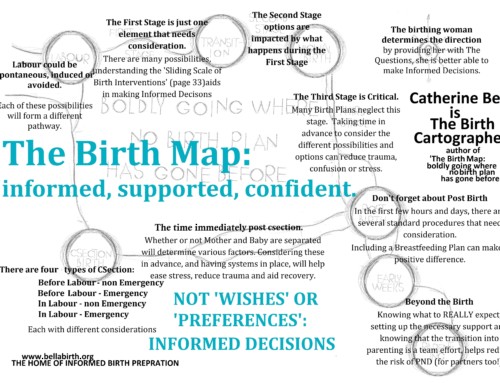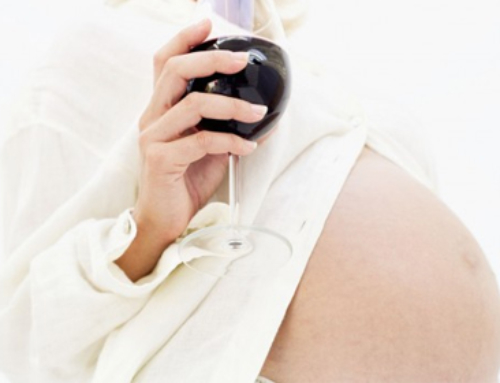Moving away from the hospitalized, medicated, intervention births that have come to define birth in our society and culture can mean a lot of things. For some, it’s simply birthing naturally in a hospital with doctors and nurses around. For others, it’s having a midwife and birthing in the comfort of one’s own home. For yet another, it would be having a midwife in a birthing center. And then there is a minority for whom this means birthing alone, without assistance at home, an “unassisted birth” if you will.
If you look at births historically or even in some cultures today, the unassisted birth does occur (though far less frequent that one would imagine). It certainly occurs for most animals, who birth on their own, away from prying eyes. The primary argument in favour of unassisted birth is that we humans are also animals who instinctually know what to do to give birth and need no assistance from others in doing so. But for some, the thought of a woman birthing herself, without any help or back-up, is flat-out dangerous or irresponsible.
So what does the research say about unassisted birth? At a population level, unassisted birth carries higher risks than other birthing scenarios Why might this be? Well, one of the primary things we have to contend with is that although we are animals, we birth socially. For human history, the norm has been to birth in the presence of another individual, but why? In an amazing review of human evolution and birth, Dr. Wendy Trevathan[3][4][5] provides support for the argument that our social birth culture emerged with the advent of bipedalism. Bipedalism changed the way in which we birth physiologically (e.g., the birth canal was reoriented such that infants now need to rotate several times during the process, something that does not happen for nonbipedal primates), making the process inherently more dangerous when done alone than with assistance. Furthermore, human evolution has meant that the birthing of our children is done earlier than other primates and mammals, with human infants born with only a quarter of the brain capacity of an adult (instead of the usual half). Infants, therefore, are unable to care for themselves to a certain degree after the birthing process the way other mammalian or primate infants are. This helplessness of infants, coupled with physiological difficulties for women birthing alone, meant that having an additional person there to guide or assist in the birthing process (when mom needs and requests it) allowed for our species to continue to thrive. And arguably has allowed our brains to continue to grow and mature. There are also social reasons that have been hypothesized for social birth. Namely, that women and children are part of a social group and the group has a greater vested interest in the child if they assist with or are present for the birth. Although we have arguably evolved to birth socially, this does not inherently mean that unassisted birth is dangerous for everyone. That is, while it poses increased risk at a population level, what of the individual level? I will immediately say that I do believe there are individuals for whom an unassisted birth is probably quite safe (and perhaps their safest bet). Why? Because of tantamount importance is the comfort level of the mother who is doing the birthing, and for some women, that may mean being on their own (or with a partner – though technically this would not be unassisted per se and would fit the evolutionary criteria for social birth and would decrease the risks, though still be slightly above those attended by an experienced individual). But there are other considerations as well. First, for a mother to safely birth unassisted, she must have the utmost confidence in her body and instincts, something that is sorely lacking in our society. We have suppressed so many of our instincts that when we are placed in a situation where they come forward, we become fearful. And if a woman is afraid of what her body is doing at any point in the birthing process, she is at higher risk of experiencing problems because she may begin fighting the process. Second, a woman must be armed with a lot of knowledge about what will happen at each stage and how to care for a newborn who may encounter problems. Humans have been passing on information about birth via the social structure for millions of years. Traditionally, a midwife would simply be there in case – fulfilling the criteria for social birth but also reducing the risk. However, if you wish to do one yourself, alone, you need to find a way to glean the information we’ve been passing between ourselves for generations. If it holds that our bodies changed when we became bipedal then with that, our birthing changed. This means we have some instinct about birth, but that may not be wholly complete given our dependence upon others in the birthing process. If one is to birth safely alone, an understanding of birth more generally is needed, particularly why there was a higher risk for solitary birth leading to the change in how we birth, in order to prepare. Some women prepare themselves and are fully equipped to handle most situations in an unassisted birth. And in today’s world, where unassisted typically refers to the lack of experienced help (e.g., midwife, doctor; notably it is sad that experienced now has to refer to medicalized/trained in many places when historically, the midwife simply had her experience from attending births and trusting women to do what they need to do during the birthing process, intervening only when absolutely necessary), the presence of a partner makes this form of “unassisted birth” safer – as the other person can help guide the baby out, deal with respiratory issues if needed, call for help if needed, remove a cord from around the neck (quite common), etc. – but the risks always remain for more difficult and serious problems. But these are the risks people take to birth in the manner that they feel comfortable. The absolute risk of something serious going wrong is small when the pregnancy is normal, and every woman has to decide what her risk threshold is. Once she’s decided that, if she truly feels that an unassisted birth is for her, then she should make sure she is well-informed and comfortable listening to her body. But one thing we should not do is pretend that true, unassisted birth is what humans have evolved for, whether we’re talking socially or, arguably, physically. When we started walking on two legs, we changed birthing from a solitary activity to a social one and social reasons may be key in social birth. Trusting your body to know how to birth and birthing without interventions is evolutionarily normal (and when used sparingly and only when necessary, life saving measures like c-sections increase our chances of survival). But birth is social. Let’s not forget or diminish that. [1] Sibley L, Sipe TA. What can a meta-analysis tell us about tradition birth attendant training and pregnancy outcomes? Midwifery 2004; 20: 51-60. [2] Shanley LK. Unassisted Childbirth: Second Edition. Santa Barbara, CA: Praeger (2012). [3] Trevathan WR. The evolution of bipedalism and assisted birth. Medical Anthropology Quarterly 1996; 10: 287-290. [4] Rosenberg KR, Trevathan WR. The evolution of human birth. Scientific American 2001; 73-77. [5] Rosenberg KR, Trevathan WR. Birth, obstetrics, and human evolution. BJOG 2002; 109: 1199-1206.






I have trouble with this:
“Bipedalism changed the way in which we birth physiologically(e.g., the birth canal was reoriented such that infants now need to rotate several times during the process, something that does not happen for nonbipedal primates), making the process inherently more dangerous when done alone than with assistance.”
To start with, I can’t imagine the shift to bipedalism involved large rates of foetal loss, or it would not have been selected for and we’d still be walking like chimpanzees. We’re routinely told how modern obstetrics has saved us – well, it certainly wasn’t around when we began walking around on two legs.
Normal birth doesn’t need assistance. Attendance would be perhaps wise, IN CASE assistance was necessary, but either Dr. Wendy Trevathan has chosen her words poorly or she starts down a slippery slope.
What I would call ‘assisted’ birth is an interference in the birthing process that poses risks to mother and child. Used routinely, inductions, epidurals, lithotomy position/stirrups, coached pushing and cervical checks hinder the birth process and can result in shoulder dystocia and maternal injury because a delicate hormonal balance is upset and the mother cannot adopt the positions necessary for easy and safe birth.
‘Midwife’ means ‘with woman’ – an attendant. With woman doesn’t mean all over woman, up inside woman, pounding woman’s abdomen and yanking baby’s cord while she screams at you to stop. I believe a midwife’s role is to sit quietly in the background and allow birth to continue undisturbed UNLESS the mother wants assistance. And were we encouraged to trust our bodies more, more of us would be aware of when we needed assistance, and when we didn’t. Having experienced one very medically managed pregnancy and a subsequent one at the other end of the technological scale, I know first hand that modern gadgetry is great at separating a woman from her intuition regarding what is going on with her body.
Humans are social animals and it would be wrong to view social birth as being only about direct assistance. Elephants and whales are similar, socially speaking, and are also known to seek out birth attendants. A large part of this has to be about protection, as any birthing animal is vulnerable, but there’s probably more to it than that. Advanced social animals have thought processes that go beyond what is essential for survival, and no doubt appreciate companionship, emotional support, and sharing in life’s joys just as we do.
I don’t advocate for unassisted birth, although I’ve had one by chance (with others, in absence of a trained midwife) as they didn’t make the birth in time. However, I’d given it some very serious thought – especially right before it came time to birth. This had to do with trust. I have had my trust shattered by a previous midwife and I only felt safe to birth when surrounded by those that I trusted implicitly. Women will take that risk when their needs are not met; when they are let down and their trust is abused by power-hungry birth attendants who are not humble enough to wait the birth process out and prefer instead to use it as an opportunity to showcase their skills and play the hero. I’m not sure that it IS natural to want to birth alone, but I can certainly understand it. When is the obstetric community going to attempt to win back the trust of women?
I don’t think you understand her argument. She’s not saying we need obstetrics or anything, but that birth became SOCIAL with the advent of bipedalism. I recommend reading her work if you can get it. Social means having someone there to assist with guiding the baby out, getting the cord unwrapped from the neck, etc. These are not interventions, but natural things done after birth.
Unassisted birth should refer to birthing ALONE (which is what many mammals do – no dad, no help, nothing). No assistance. That is not how humans have birthed for generations.
As to the argument that bipedalism didn’t result in mass death, probably not. The inherent risk of birth is high, but not huge. BUT, with evolution, those who had assistance would generally fare better, making it more common. Make sense?
Unassisted birth refers is birthing without MEDICAL assistance. Sometimes unassisted birthers do have their babies alone, but many more have their babies with their partner, children, friends or other family present. “Social” argument = invalid.
That is more of the “modern” view of unassisted birth, but the research and historical idea of unassisted birth is birthing alone, which is why the social argument is made and studied in various studies.
Amazing story, i am a midwife and this is what I want to do, maybe with my partner present of course when I choose to have a child. this gives me confidence in my choice regardless of what everyone in society says as they see different things as norms I have confidence in my body and instincts 🙂 thank you for sharing
“Unassisted Birth: Is This How We Were Meant to Birth or Is it Just Plain Crazy?
| Evolutionary Parenting | Breastfeeding and Sleeping Arrangements – Science and
History in Parenting” was in fact a perfect posting.
If perhaps it included more images it should be even more effective.
Thank u -Cherie
I get what you are trying to say here: that birth after a low-risk pregnancy (usually) goes best when a quiet, nurturing, non-interfering person is in attendance, whether that is a traditional midwife, a friend, or a partner.
However, the baby does not need to be “guided out”; that is interference. If anything, the person in attendance could catch the baby if the birthing person doesn’t wish to do so, or is in an awkward position. Additionally, if the cord is around the neck, it is still best not to touch it, but instead, hold the baby’s head against the birthing persons pubic bone, allowing the body to somersault out, naturally unwinding the cord. When the cord is touched, it interferes with blood flow, hindering the postpartum cord’s function. Also, the instinct of a person birthing is often better than that of any person in attendance; they will instinctively know whether suction or help with breathing is needed, and can perform these functions with their own body. (Sucking the mucous out with their mouth, providing resuscitation themselves after training during, or prior to, pregnancy while cord is attached.)
MidwifeThinking.com is a wonderful resource for these points.